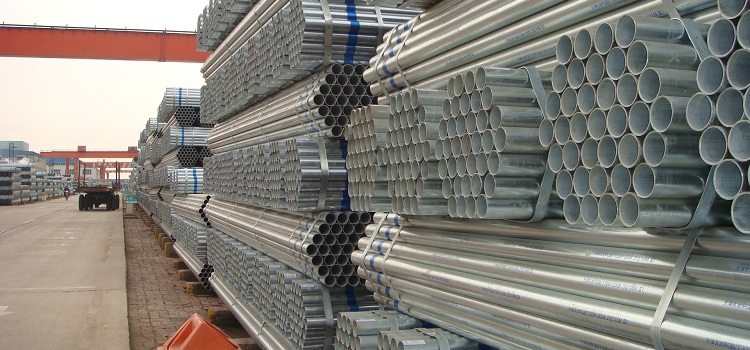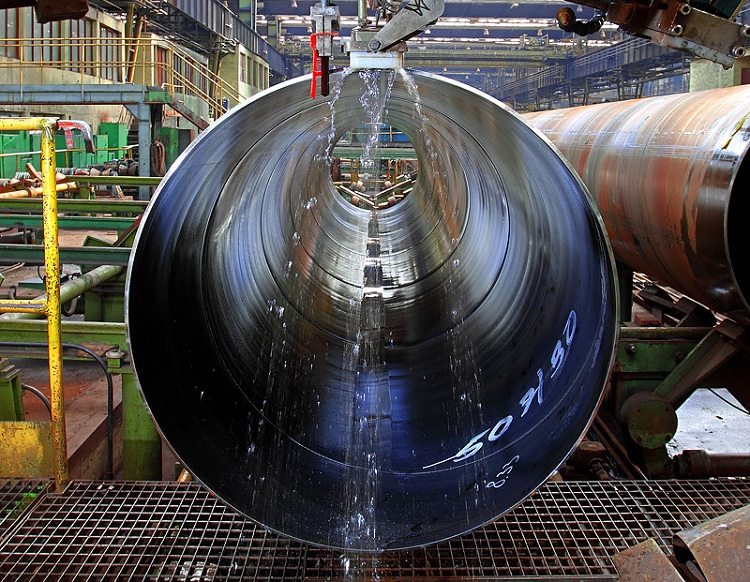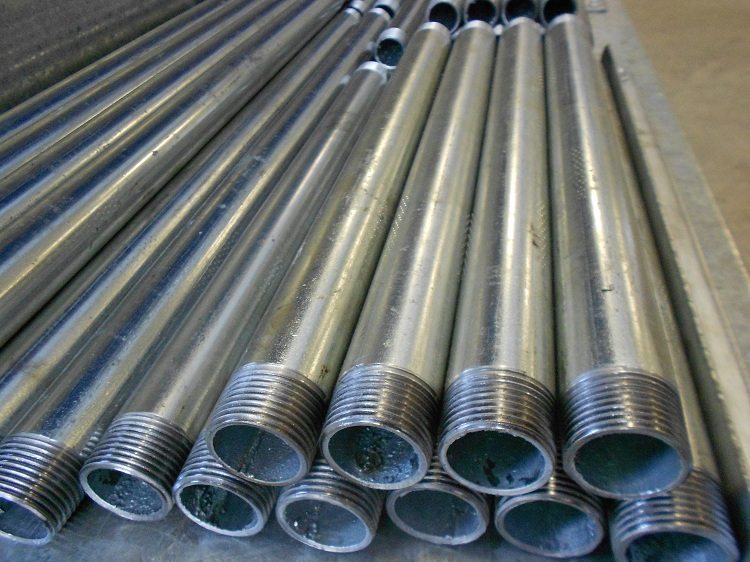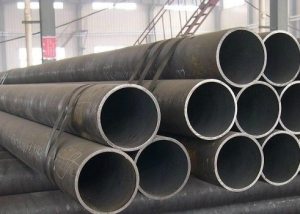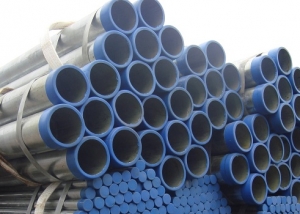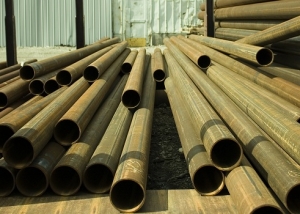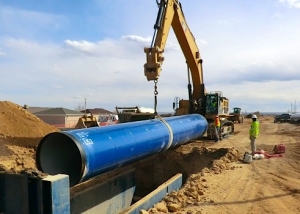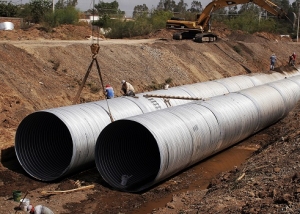Thanks to the zinc coating, galvanized pipes have increased durability and corrosion resistance compared to ferrous metal. The range of products from ferrous metals and with a zinc layer is identical. Galvanized steel has been widely used in water supply, heat supply, gas supply, construction, installation of outdoor advertising, traffic signs.
Content [Hide]
Production of galvanized pipes: technology and types
When using a material such as steel, it must be taken into account that it oxidizes when interacting with air and various liquids. To reduce this negative quality produce galvanizing. Zinc oxidation is faster, which protects the steel from corrosion. In the production of galvanized pipes using high quality carbon steel grades:
- 10;
- 15;
- 20;
- 35;
- 45
The most common production methods for this type of product include hot and diffusion galvanizing. During hot-dip galvanizing, a steel billet is dipped into molten zinc at a temperature of about 450 ° C. Diffuse galvanizing is based on the penetration of zinc atoms into the intercrystalline lattice of iron. This method provides high mechanical strength of the coating, resistance to peeling and chips. For thermal diffusion galvanizing, a ferrous metal structure is placed in a container with zinc powder. Zinc saturation of the surface occurs at a temperature of 290-450 ° C. As a result, in addition to anticorrosion properties, a galvanized pipe has electrochemical protection. Ferrous metal becomes a cathode, and zinc anode is gradually destroyed by corrosion.
Modern manufacturers offer an extensive range of galvanized steel. Along with the classic round, you can buy a product with a square or rectangular section. In addition to shape, pipes also vary in length and wall thickness. The outer diameter can range from 17 mm to 159 mm, and the bore diameter of galvanized pipes varies from 10 to 150 mm. This variety leads to many applications.
Areas of use for galvanized steel
The most common area is housing and communal services and the laying of various communications. In housing and communal services, the durability of galvanized pipes is especially important. Most networks are laid underground, where private replacement is difficult. In addition to heating, water supply and gas supply, galvanized steel is used for outdoor lighting poles. Products with reinforced seam and zinc coating on the outside and inside are used for the installation of plumbing and fire pipelines.
Important! Galvanized pipes do not withstand high pressure. The maximum value for systems with water is 16 BAR, for compressed air 10 BAR.
Galvanized metal is indispensable in road construction. It is used in the manufacture and installation of traffic signs and signs, traffic light poles, as well as supports for road and bridge fences.With a zinc layer thickness of 30 microns and above, the product is able to withstand aggressive atmospheric effects and high levels of humidity for a long time. Dozens of years of operation provide significant savings on the replacement and repair of road signs, signs and poles. In road construction, the unified length of poles and supports of signs and signs is of key importance. In this case, it is important that most plants offer cutting galvanized steel gauges for specific sizes.
Galvanized metal is widely in demand in construction. Pipes have found application in the construction of industrial facilities, exhibition halls, gyms, warehouses, repair shops, parking lots, awnings and other lightweight structures. In private construction, galvanized pipes are used as pillars for fences, ducts for ventilation systems, cage frames for breeding birds and small pets. Such popularity is associated with low maintenance costs, designs can last about 40 years without additional processing.
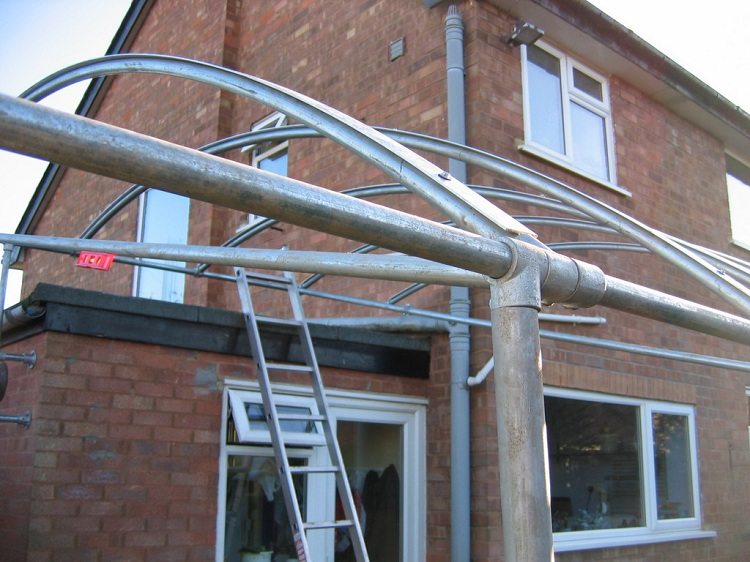
The corrosion resistance of galvanized pipes allows them to be used for the installation of outdoor structures
The agricultural sector also has a high demand for galvanized products. Pipes with zinc protection can be found in elevators, greenhouses, greenhouses. However, the most common application is the supply of mineral fertilizers and irrigation in crop production. Thanks to the zinc coating, the metal can withstand moderate exposure to aggressive alkaline and acidic environments.
In horticulture and viticulture, galvanized pipes are used as a support for young fruit trees and vines. In livestock complexes, zinc coating extends the life of supports in cowsheds, chicken coops, stalls and other facilities for livestock and poultry. The anticorrosion properties of pipes allow them to resist the negative effects of animal waste for a longer period. For example, the maximum operation of a black rolled pipe in a pen for keeping and feeding an animal is 5 years, with the need to periodically carry out repair work. At the same time, a galvanized pipe without reconstruction will last at least 10 years.
Methods of connecting galvanized pipes
One of the main tasks of galvanized pipes is the transportation of liquid and gaseous media. Of course, the requirements for tightness of the joints are very high, because this is the only way to avoid loss of media.
Modern installers use 3 connection methods:
1. Installation of couplings. This method of threadless connection is mainly used in fire pipelines. Due to the high pressure of the medium, another type of connection is technically impossible. The method is based on the “castle” connection - the inner part of the coupling lock is fixed for risk on the workpiece.
2. Threaded connection. A thread is applied to the outside of a galvanized pipe by threading on a machine or using a die. A clutch with a thread of several turns on the inner surface also clings to the thread.
3. Welding. The most common method; electric arc welding under the influence of alternating current. To connect galvanized communications, you should abandon this method - during welding, zinc evaporates, while emitting welding aerosol harmful to human health and the environment. The connecting seam itself loses its strength coefficient and bearing function.
The best option is a threaded connection with a coupling. Convenience of installation is combined with subsequent ease of repair work. For civil engineering it is especially important that special tools (welding machine, soldering iron, etc.) are not needed for the connection. If necessary, the mounted structure can again be disassembled with an ordinary wrench.
Advantages of galvanized pipe
Steel itself is a reliable material and is characterized by high strength and a sufficiently long service life. Galvanizing can improve the performance of a steel pipe, and it acquires:
- resistance to aggressive environments;
- high degree of corrosion protection;
- esthetic appearance - a smooth shiny or matte surface;
- antibacterial properties. Zinc inhibits the development of various pathogenic bacteria. This property is especially important for water and gas pipes;
- increased service life. Galvanized riser can stand for 50 years, and steel will last 10-15 years.
Note! The zinc coated pipe is 3% heavier than black.
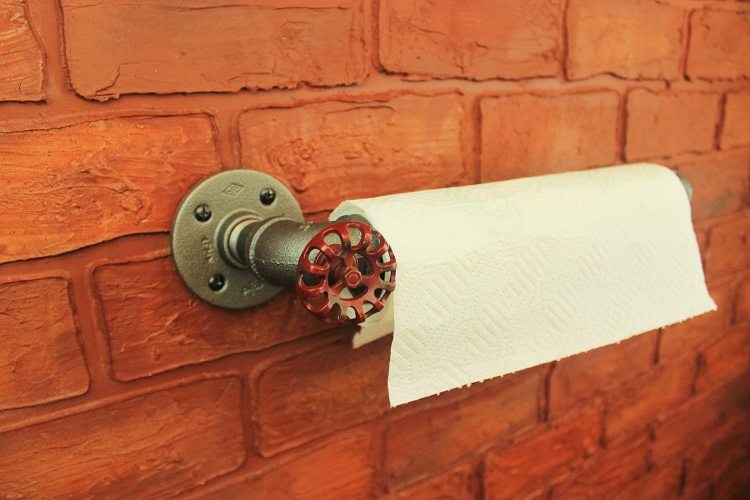
Thanks to the aesthetic appearance, galvanized pipes can be used to create decor elements without any additional processing
Compared to polypropylene pipes, galvanized pipes benefit from the following advantages:
- Resistance to shock. Chips do not form on the galvanized surface, unlike polymer coatings.
- Zinc coated pipes are more durable and cannot be damaged by piercing or cutting objects. You can not be afraid for deformation during transportation installation or maintenance.
- When exposed to high temperature, galvanized steel practically does not expand, therefore, the dimensions and diameters remain stable.
- Galvanized, like iron pipes, can be operated under conditions of higher temperature and pressure. Unlike polypropylene, galvanized steel is used in heat supply, where the water temperature exceeds 140 degrees Celsius.
- During galvanization, due to a smoother internal surface, deposits do not form in the communications that impede the transport of liquid media.
- They can be used in ventilation systems and chimneys. On the inner surface does not form a layer of dust and residues of combustion products.
Summing up, it can be stated that the use of galvanized pipes is optimal for various fields of human activity. Products combine an affordable price and excellent technical parameters. Due to its high anticorrosive properties and resistance to weathering, pipes are successfully used both indoors and for outdoor structures.
